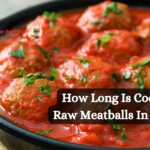You presumably associate chili powder with the aroma of a delicious pot of chili cooking on the stove. Although chili powder is the most crucial ingredient in a perfect saucepan of chili, it is also an essential seasoning in a wide variety of other dishes. So, what can be used instead of chili powder?
What happens if you do not have any chili powder on board or run out? Seasoning defines a dish, so you cannot simply omit the powder! Therefore, you must locate a replacement.
Easy Substitutions For Chili Powder
When you need to add a little bit of heat or flavor to a dish but are out of chili powder, the most straightforward replacement is one of the individual ingredients in chili powder.
Additionally, several unanticipated single seasonings make excellent substitutes!
1. Ancho Powder
If a recipe calls for a chili powder blend, you may substitute ancho chile powder alone. However, because it is not mixed with other seasonings, ancho powder is more potent than a chili powder blend.
Therefore, begin with half the quantity specified in the recipe and add more as necessary.
2. Paprika
Paprika resembles chili powder in color because it is also produced from ground chilis, making it a suitable substitute.
The primary distinction is that Paprika is significantly less spicy than chile powder. However, it has a comparable smoky flavor. Paprika is a beautiful substitute for chili powder because it provides the smoky elements of chili powder without the heat.
Paprika can be substituted for chile powder in a 1:1 ratio.
If you want to replicate the flavor of chile powder more closely, combine Paprika with garlic powder, onion powder, and cumin. Begin with 1/2 teaspoon of each per 1 teaspoon of Paprika.
3. Cayenne Pepper
On the opposite end of the spectrum from Paprika, cayenne pepper is extremely spicy! Cayenne pepper, a dried and ground pepper, is an excellent substitute for increasing the spiciness of a dish.
However, its heat level is greater than that of poblano peppers, so commence with small quantities.
Start with a quarter of the amount of chile powder called for, and then add more as necessary.
After the initial flavor, the cayenne pepper’s heat can sometimes intensify, so wait a minute before adding more.
Cayenne pairs well with garlic and onion powder, which you can also combine with Paprika to produce a substitute for its heat.
4. Red pepper Flakes
Red pepper flakes, commonly found in small round containers on pizza restaurant tables, can be used for more than just pizza.
When you don’t have powdered chilis, a pinch of these fiery flakes can provide heat and flavor. If you don’t want the chips visible, you can pulverize or blend them before using them.
You can substitute chili powder with red pepper granules in a 1:1 ratio.
5. Cumin
Cumin is the seasoning that makes your beloved Mexican dishes smell delicious. It is one of the most commonly used seasonings in Mexican and Tex-Mex cuisine, alongside ancho powder.
Cumin has such a distinct flavor that, even without chile powder, it will hint at the authentic taste you seek.
If using cumin alone, It can substitute a 2:1 ratio of cumin for chile powder.
However, if you wish to combine cumin with other spices, such as garlic and onion powder, use a 1:1 ratio of cumin to chile powder and add 12 measurements of each extra kick.
6. Garlic Powder
Chili powder frequently includes garlic powder as a constituent. Although it lacks the spice and fire of chili powder, cumin is an excellent option for seasoning meats, soups, and sauces.
Garlic powder can be pretty potent, so you should use it sparingly in the absence of other flavors.
Therefore, commence with a half serving of garlic powder relative to the amount of chili powder called for in the recipe. If required, you can always add more!
7. Onion Powder
Onion powder, like garlic powder, is used in chili powder blends. It cannot provide the spice and chile flavor when used alone.
While garlic powder is frequently used alone, onion powder is typically more effective when combined with other flavors.
Even if you don’t have chile powder, onion powder, garlic powder, Paprika, or cayenne can provide a similar taste.
Start with a 14 teaspoon of onion powder and add more as necessary.
8. Oregano
Oregano may be more commonly associated with Italian cuisine, but it is also a prominent ingredient in Mexican and Latin American dishes.
Numerous chili powder formulas contain oregano. Oregano can be used independently, just like the countless other seasonings found in the chile powder blend.
As with garlic and onion powders, however, it will need more flavor and spice than chili powder.
Oregano is most effective when added to soups and sauces. It is recommended to begin with half the amount of oregano and chile powder called for in the recipe.
Adding additional seasonings, such as garlic powder and Paprika, will help the flavor profile resemble chili powder.
9. Hot Sauce
You can substitute chili powder in an emergency with hot sauce, which you may already have in your refrigerator. However, spicy sauces have a distinct flavor profile due to the acidic flavor that results from the combination of chilies and vinegar.
Therefore, while it will give the desired spice and heat, it will lack the smokiness.
A few dashes of hot sauce can lend the necessary kick to a sauce or soup.
Start with a quarter of the chile powder called for in the recipe and add it slowly. Remember that it will impart heat and alter the flavor profile.
10. Chili Sauce
The ingredients for chili sauce are chili chilies, salt, and vinegar. It often contains sugar as well. These ingredients are combined and cooked to form a viscous sauce or paste.
Chili sauce’s heat and flavor can vary depending on the varieties of peppers used and the amount of sugar added. Therefore, I recommend tasting the chili sauce on its own before adding it to your recipe to ensure you appreciate its flavor profile.
Follow the same slow progression indicated for the hot sauce if using chili sauce.
Substituting chili powder can entail a variety of options based on individual flavor preferences. You can cover chili powder with Paprika, cayenne pepper, red pepper flakes, cumin, or a blend of smoked Paprika and cayenne while maintaining the desirable heat and flavor profile in recipes.
Thank you for reading….










